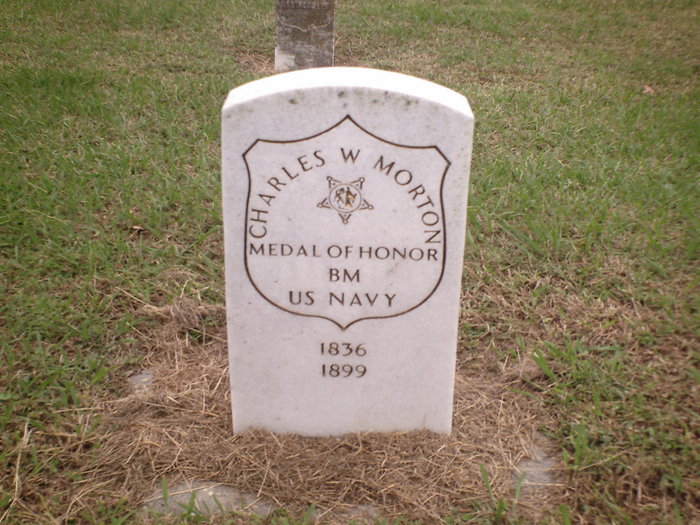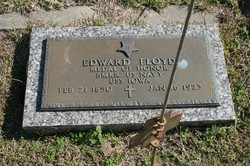|
|
Post by groundhog on Dec 23, 2012 0:18:42 GMT
Fort Fisher, North Carolina
23rd December 1864  Officers and crewmen of the USS Agawam pose on deck, while she was serving on the James River, Virginia, August 1864. The USS Agawam was a US Navy ship of the Civil War period. In 1864 she was part of the North Atlantic Blockade conducting operations in the James River, Virginia. Although William Hinnegan and Robert Montgomery were part of the crew of the Agawam when they won their Medals of Honor, they wer actually serving on a ship called the Louisiana when they performed their acts of bravery. In November 1864 the Agawam suffered boiler trouble and was sent to Norfolk Navy Yard for repairs. Her Captain, Commander Rhind left with a volunteer crew to take over the Louisiana at Beaufort, North Carolina. The Louisiana was a floating bomb, packed with explosives and her volunteer crew were to sail the ship up to Fort Fisher and blow her up. Fort Fisher guarded Wilmington, North Carolina, the last major port open to Confederate shipping. The operation was delayed for several days due to poor weather. Eventually the Louisiana sailed on her last voyage on 23rd December, being towed by another ship to the fort. Once they reached Fort Fisher, Rhind and his men set the Louisiana ablaze and abandoned ship. Unfortunately the explosion failed to damage the defences of the fort- it had been hoped that the explosion would detonate the fort’s magazine. A landing party failed to take the fort and the operation was abandoned on the 24th December. Amongst the crew of the Louisiana were two Irish-born sailors. William Hinnegan Hinnegan was a Second Class Fireman. He had been born in Ireland in 1841 and joined the Navy in New York. His Medal of Honor was issued on 31st December 1864. Hinnegan’s date of death and burial place are unknown. Robert Montgomery Born in Ireland in 1838. He joined the Navy at Norwich, Connecticut. In 1864 he was a Captain of the Afterguard aboard the Louisiana. His Medal of Honor was issued on 21st December 1864. Montgomery died in England in 1898 and he is buried in Ford Cemetery, Liverpool. Hi grave is unmarked. Photo Credit; www.newmarketnhhistoricalsociety.org |
|
|
|
Post by groundhog on Dec 26, 2012 19:34:43 GMT
Charles Moore
USS Marblehead, Stono River, South Carolina
25th December 1863  Charles Moore was born in Ireland in 1839. During the Civil War he served as a Landsman in the US Navy aboard the USS Marblehead, a steam driven gunboat. The USS Marblehead, spent much time engaged in blockading operations in the estuaries of South Carolina. In addition she provided gunfire support to Union troops in garrisons in the area. In November 1863 Marblehead provided support to pile-driving operations in the Stono River near Legareville. A month later on Christmas day she was fired upon by Confederate shore batteries on John’s Island, sustaining twenty hits. Moore was wounded in the exchange of fire but stayed at his quarters until loss of blood necessitated his being taken for treatment below decks. The Confederates abandoned one of their gun positions because of the fire from Marblehead. Moore was awarded his medal on 16th April 1864. His date and place of death are unknown.
|
|
|
|
Post by groundhog on Dec 27, 2012 1:39:10 GMT
Charles Morton
USS Benton, Mississippi
27th December 1862  The USS Benton was a Union ironclad gunboat operating on the Mississippi River during the American Civil War. In December 1863 Gen Ulysses Grant started operations against Vicksburg, Mississippi which was in Confederate hands and controlled traffic along the river. Half Grant’s force was sent by boat along the Yazoo River a tributary of the Mississippi under command of Gen Sherman. The naval support consisted of “torpedo”- clearing ships to clear the river of “torpedos” or mines and their support ships, of which the USS Benton was one. One problem the navy had was that the Confederates were detonating their torpedos electrically from behind the levees of the Yazoo River. Part of the plan was for an infantry brigade to capture the levees and thus deny their ue to the Confederates. In addition the navy had to suppress the Confederate artillery on the bluffs overlooking the river to cover the infantry advance on Vicksburg and to draw rebel forces away from the town. The USS Benton was ordered to engage the Rebel batteries on Drumgould’s Bluff on the east bank of the river, more as a means of assesing the enemy’s strength than anything else. Meanwhile the minesweepers in the area began to come under fire from the Confederates on the bluff. The CO of the Benton sailed his ship close to the river bank and tied her up in order to ensure control of his ship and accurate fire on the Confederate positions. Of course this also meant that his ship was an easy target for rebel gunfire. The battle lasted an hour and a half during which Boatswain's Mate Charles Morton earned himself a Medal of Honor. Morton was born in Ireland in 1836. His medal was issued on 3rd April 1863. Morton died on 4th August 1899 and he is buried in Portsmouth, Virginia. William Gwin the Captain of the USS Benton was mortally wounded during the battle. Sherman’s attack on Vicksburg was called off the following day and it would be six months before Grant captured the town |
|
|
|
Post by groundhog on Dec 29, 2012 0:14:09 GMT
Wounded Knee Creek, South Dakota
29th December 1890 The Wounded Knee Massacre was the major event in a series of skirmishes between Sioux Indians and the US Army in the winter of 1890-91. On the 28th December a detachment of the 7th Cavalry rounded up Spotted Elk's band of Sioux at Porcupine Butte and escorted them to Wounded Knee Creek on the Pine Ridge Indian Reservation. The balance of the regiment surrounded the Indian camp overnight with the intention of disarming them the following morning. The cavalry were supported by a battery of artillery. During the process of disarming the Indians, one man resisted, a short struggle ensued during which a shot was fired. The soldier’s opened fire and sparked a short fight in which 300 of the Sioux and 25 soldiers were killed. 39 soldiers were wounded and six more died later. The majority of the Sioux dead, about 200, were women and children. Wounded Knee is generally regarded as the end of the Indian Wars although there were further skirmishes afterwards in South Dakota. The massacre has come to symbolise the treatment of Native Americans by the “whites”. In 1973 a stand-off between law enforcement officers and members of the American Indian Movement protesting at the Wounded Knee Memorial lasted for 71 days. Twenty men were awarded the Medal of Honor for their actions at Wounded Knee Creek of which two were awarded to Irishmen. The National Congress of American Indians has called for the Medals of Honor awarded for Wounded Knee Creek to be rescinded. nebraskahistory.org/publish/publicat/history/full-text/NH1994MedalsWKnee.pdf George Lloyd George Lloyd 1 was born in Co. Tyrone in 1843. He joined the 7th Cavalry in Canton, Texas on 21st March 1869, fought at Little Big Horn in Maj Reno’s Company and was subsequently promoted Corporal. By 1890 he was a Sergeant in Company I. During the fighting at Wounded Knee Creek he was wounded in the right lung but apparently carried on as his citation was for bravery, especially after having been severely wounded through the lung. Lloyd’s medal was issued on 16th April 1891. He committed suicide in Fort Riley Kansas on 17th December 1892 and he is buried in the Post Cemetery. 1. Not to be confused with the George Loyd who was a US-born MOH winner in the Civil War. Thomas Sullivan  Thomas Sullivan was born 20th April 1859 in Co. Meath. He joined the army in New Jersey. His Medal of Honor for Wounded Knee was issued on 17th December 1891 for “conspicuous bravery in action against Indians concealed in a ravine”. Thomas died in New Jersey on 10th January 1940. He is buried in Holy Sepulcher Cemetery, East Orange. Photo; www.homeofheroes.com
|
|
|
|
Post by groundhog on Dec 30, 2012 3:18:48 GMT
Hugh Logan
USS Rhode Island, Cape Hatteras, North Carolina
30th December 1862  Hugh Logan was born in Ireland in 1834. During the American Civil War he served aboard the supply ship USS Rhode Island with the rank of Captain of the Afterguard (a Petty Officer). On 30th December 1862 the USS Rhode Islandwas engaged in towing the Ironclad USS Monitor south from Hampton Roads. The ships ran into a storm sixteen miles off Cape Hatteras, North Carolina and the Monitor began to sink. Her crew began to abandon ship and the Rhode Island launched eight cutters to rescue the men in the water. Sixteen of the crew of sixty-two men of the USS Monitor died while the rest were saved by the cutter crews operating in desperately bad weather. During the operation Cutter No 3, with Logan and seven others aboard, was blown out to sea some fifty miles and drifted for eighteen hours until the men aboard were rescued by a merchant ship, the Colby. The Colby herself struck a reef while entering Hatteras Inlet and had to be towed into Beaufort where Hugh and the rest of the cutter crew spent a week assisting in repairing the ship. They returned to USS Rhode Island on 9th January 1863. For their courage in saving the crewmen in the water the seven enlisted men of Cutter No 3 were awarded the Medal of Honor. The boat’s commander did not, since he was an officer and not entitled to the award at that time. In the Navy the Medal of Honor can be awarded for non-combat heroism and the men of the USS Rhode Island were the first non-combat awards of the medal. Another unusual thing is that Logan and another man were listed in error as having died during the operation. Happily, Hugh Logan lived on until 22nd November 1903, dying in Glasgow aged 69. His burial place is unknown.
|
|
|
|
Post by groundhog on Dec 30, 2012 3:27:13 GMT
Richard Nolan
White Clay Creek, South Dakota
30th December 1890 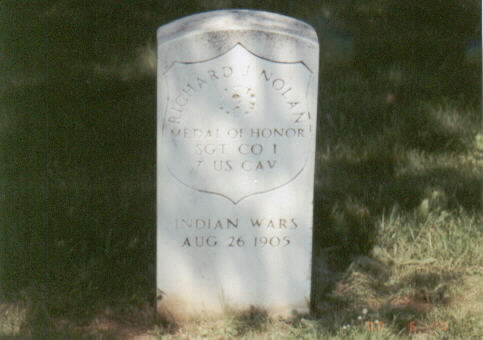 After the fight at Wounded Knee the Sioux survivors had moved to White Clay Creek, 15 miles north of the Pine Ridge Reservation,. In the area they set fire to the Drexel Mission. A company of the 7th Cavalry was sent to round them up on 30th December and was ambushed by the Sioux in a gully near the mission. The 9th Cavalry had to come to their rescue. One Irishman received a Medal of Honor for bravery at White Clay Creek. His name was Richard Nolan, a Farrier-Sergeant in the 7th Cavalry. Nolan was born in Ireland on 1st January 1848. His medal was issued on 1st April 1891 and he died in Washington DC on 26th August 1905. He is buried in the US Soldiers' and Airmen's Home National Cemetery. |
|
|
|
Post by groundhog on Jan 2, 2013 2:44:30 GMT
James Lenihan
Clear Creek, Arizona
2nd January 1873 Lenihan was from Kerry, born in 1846. He won a Medal of Honor in Arizona on 2nd January 1873. At that time he was a Private in Company K, 5th Cavalry and his medal was awarded for “gallantry in action” at Clear Creek, Arizona. The area had recently been settled by American settlers claiming fertile land along the Verde River. Hispanic settlers had been in the area for hundreds of years and the Apache and Yavapai Indians were long established in the area. Hostilities quickly broke out between settler and Indian and with the end of the Civil War the US Army moved into the area. It was one of these two Indian tribes that were engaged by a detachment under a Lt W F Rice and drawn from the 5th Cavalry and 23rd Infantry regiments. There was one Indian scout with the party. The only friendly casualty was one man wounded. James Lenihan received his medal on 14th April 1875. He subsequently disappeared from history and his date of death and burial place are currently unknown.
|
|
|
|
Post by groundhog on Jan 8, 2013 0:13:25 GMT
Edmond Butler
Wolf Mountain, Montana
8th January 1877 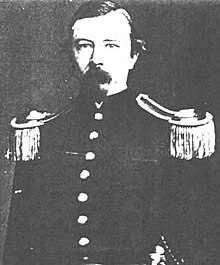 You’ll recall that after the Battle of the Little Bighorn the US Army launched a suStained campaign against the Sioux and Cheyenne warriors. The culmination of the autumn and winter campaign was the Battle of Wolf Mountain. By December 1876 Crazy Horse and his Sioux along with Dull Knife’s Cheyenne were camped in the Tongue River valley. The Indians were in a poor state because they simply lacked the logistic resources to fight a prolonged war. Crazy Horse decided to negotiate with Gen Nelson Miles but Crow Indian Army Scouts murdered the delegation that was sent to Miles HQ. In retaliation the Sioux launched a series of hit and run raids designed to draw Miles men out of camp. Miles left his post on December 28th in search of the Sioux encampment arriving near it on the 7th January. He planned on sending out several reconnaissance patrols the following morning but instead his camp was attacked by the Indians. The soldiers were in a relatively strong position on hills overlooking the Tongue River Valley. The Indians attacked several times but were driven back relatively easily and Miles finally captured a hill from which the Sioux attackes were launched. With bad weather on the way, the Indians withdrew. Casualties in the battle were small, the army lost 5 dead and 8 wounded, the Sioux lost 3 dead. The battle was a strategic victory in that it broke the will of the Sioux to continue resistance. Crazy Horse surrendered in May ending the Great Sioux War. During the fighting at Wolf Mountain the Indian force surrounded the cavalry from bluffs above a canyon, but were dispersed by two artillery pieces. One band of warriors, attired in battle dress and led by a Medicine Man named Big Crow, were poised in a strategic location on a high bluff to the left and above the column of soldiers. Big Crow did a war dance before the soldiers who did not fire a shot, for several minutes, then missed repeatedly. Incited by the "magic" of their medicine man, the Indian warriors prepared to destroy the cavalry when a bullet pitched Big Crow into the snow. Captain Edmond Butler, along with Captain James Casey and First Lieutenant Robert McDonald, immediately and valiantly stormed the high bluff, leading their men in scattering the warriors. For this gallant charge, all three officers were awarded the Medal of Honor. Butler was born in Clonmel, Co. Tipperary on 19th March or September 1827. He joined the army in Brooklyn, New York shortly after arriving in the US and was commissioned a Lieutenant in the 5th Infantry Regiment in 1861. Butler spent his entire career soldiering on the frontier and made the rank of Lieutenant-Colonel before retiring in March 1891. He died in France on August 21st 1895 at the age of 68 and his body was returned to the US for burial in Holy Sepulchre Cemetery, Omaha, Nebraska. visitmt.com/history/Montana_the_Magazine_of_Western_History/wolfmountain.htm |
|
|
|
Post by groundhog on Jan 15, 2013 1:46:48 GMT
[/img] Map of the attack on Fort Fisher[/center] Back around Christmas two Irish sailors won Medals of Honor in a failed attack on Fort Fisher, North Carolina. Following that fiasco, Grant replaced the Army commander who was to oversee the capture of the fort. On 13th January Gen. Terry landed his infantry north of the fort in conjunction with a massive naval bombardment which spent two days knocking out almost all of the fort’s guns. Terry launched his attack on 15th January with 4,500 infantry attacking along the peninsula, while a force of 2,000 marines and sailors were landed from ships and attacked the shore side of the fort. The plan for the naval force was for the marines to get into a position where they could provide covering fire for the sailors as they assaulted the north-east bastion of Fort Fisher. However everything quickly became confused, the attacking waves got mixed up and the marine covering fire failed to appear. A mass assault on the bastion was driven back in disarray. The naval assault did however have one unintended outcome, the defenders of the fort thinking that they constituted the main assault, reinforced the north east of the fort allowing the infantry attacking elsewhere to storm Fort Fisher. Amongst the naval forces on the day were three Irishmen who were awarded Medals of Honor. All three served on the USS Minnesota. David Bass  David Bass was born in 1843 in Ireland according to the US military. Militarytimes.com gives an exact date of birth as 3rd February 1842. He lived in Little Falls New York where he worked as a blacksmith. During the Civil War he served on USS Minnesota and was one of the shore party on the attack on Fort Fisher. When the general body of sailors and marines retreated, Bass was one of those who remained at the fort until night fall when they withdrew with “its wounded, its arms, and its colors”. After the war Bass returned to his civilian occupation as a blacksmith in Little Falls where he died on 15th October 1886. He is buried in Wilcox Cemetery, Little Falls. Thomas Connor Born in Ireland in 1842, Connor joined the navy in Baltimore. During the attack on the fort he remained with a wounded officer while others retreated and carried him to safety after darkness had fallen. Issued his medal on 22nd June 1865, Connor dropped out of history and his date of death and burial place are unknown. John Rannahan John Rannahan was a Corporal in the US Marine Corps. He was born in 1836 in County Monaghan and like Bass and Connor he remained at the fort until after dark before withdrawing. Rannahan died in Pennsylvania on 1st June 1892 and is buried in St Martin’s Cemetery, New Derry. |
|
|
|
Post by groundhog on Jan 20, 2013 0:31:28 GMT
Michael McKeever
Burnt Ordinary, Virginia
19th January 1863 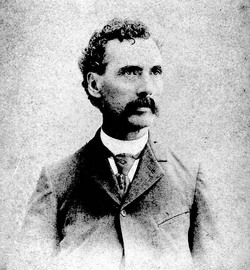 McKeever was born in Ireland on 25th March 1842. During the Civil War he served in Company K, 5th Pennsylvania Volunteer Cavalry, enlisting as a Private in Philadelphia on 9th September 1861. On 19th January 1863 while on a reconnaissance patrol he took part in skirmish with a force of Confederates that far outnumbered the Pennsylvania Cavalry. McKeever’s citation says “he led the charge in a most gallant and distinguished manner, going far beyond the call of duty” for which he was awarded the Medal of Honor. Like many Civil War soldiers, his medal was a long time in coming, being issued on 2nd August 1897. After the war McKeever returned to Pennsylvania where he died on Christmas Eve 1916. He is buried in Holy Sepulchre Cemetery, Cheltenham, Pennsylvania. Photo; www.findagrave.com |
|
|
|
Post by groundhog on Jan 24, 2013 11:09:28 GMT
John Dempsey
USS Kearsarge, Shanghai, China
23rd January 1875 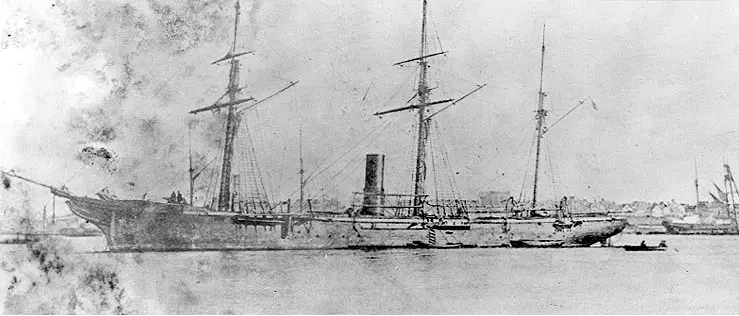 John Dempsey was born in 1848 in Ireland. He was a Seaman aboard the USS Kearsarge at Shanghai, China on 23rd January 1875. Dempsey jumped overboard from the Kearsarge to rescue a drowning shipmate and was awarded a Medal of Honor. John Dempsey’s date of death and burial place are unknown.
|
|
|
|
Post by groundhog on Jan 25, 2013 21:16:01 GMT
Edward Floyd
USS Iowa
25th January 1905 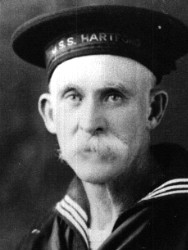 Edward Floyd was born in Ireland on 21st February 1850. He was a Boilermaker aboard the USS Iowa in 1905 when the manhole cover of Boiler D blew out. Floyd and five others of the engine room crew earned Medals of Honor for their work in saving the ship. The medals were awarded on 20th March 1905. Floyd died in Charleston, South Carolina on 16th January 1923. He is buried in St. Lawrence’s Cemetery in the city. Photos; Floyd; todayinirishhistory.com Grave; www.findagrave.com
|
|
|
|
Post by groundhog on Feb 6, 2013 0:18:29 GMT
Battle of Hatchers Run, Virginia
5th – 7th February 1865 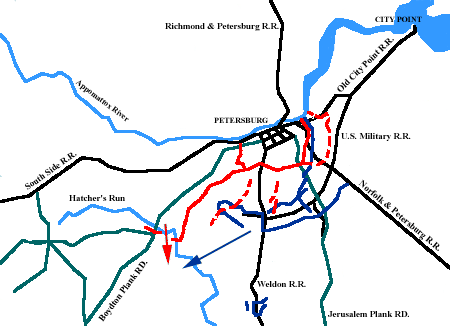 Map of the Hatcher’s Run battle site showing the Confederate defences in red and Union siege positions in blue. The arrows indicate the general movements of the two sides This Battle also called Dabney's Mills, Armstrong's Mill, Rowanty Creek, and Vaughn Road. It was a three day operation, part of a series of large raids by Union forces during the Siege of Petersburg, to disrupt Confederate supply routes west of the town. Brig-Gen David Gregg’s cavalry division rode out to the Boydton Plank Road via Ream's Station and Dinwiddie Court House to destroy any Confederate supply wagons they found. Maj-Gen G.K. Warren with V Corps crossed Hatcher’s Run and took up a blocking position on the Vaughan Road to provide cover for Gregg’s operations. Two divisions of II Corps under Maj-Gen A.A. Humphreys shifted west near Armstrong’s Mill covering Warren’s right flank. Late in the day, Maj-Gen John Gordon attempted to turn Humphreys right flank near the mill but was repulsed. During the night, the Federals were reinforced by another two divisions. On February 6th, Gregg returned to Gravelly Run on the Vaughan Road from his unsuccessful raid and was attacked by Pegram’s Confederate division. Warren pushed forward a reconnaissance in the vicinity of Dabney’s Mill and was attacked by Pegram’s and Maj. Gen. William Mahone’s divisions. Pegram was killed during this action. Although the Union advance was stopped, the Federals extended their siegeworks to the Vaughan Road crossing of Hatcher’s Run. Map is on www.beyondthecrater.com/ The site also has maps showing the Union and Confederate movements over the three days of the battle. Two Irishmen won Medals of Honor at Hatcher’s Run, although, John Delaney’s citation refers to Dabney’s Mill. Delaney’s medal was awarded for actions on 6th February, Spillane’s is dated from 5th to 7th. For convenience I have grouped them together. John Delaney  The 107th Pennsylvania was in 3 Brigade, 3rd Division of Warren’s V Corps. John Carroll Delaney was born in Co. Galway on 22nd April 1848. He entered the US Army at Honesdale, Pennsylvania and served as a Sergeant in Company I, 107th Pennsylvania Volunteer Infantry. His Medal citation says he “sprang between the lines and brought out a wounded comrade about to be burned in the brush”. The Medal of Honor for this act of bravery wasn’t actually issued until 29th August 1894. He died on 4th April 1915 and is buried in Section 3 of Arlington National Cemetery. Timothy Spillane Spillane was born in Kerry in 1842. During the Civil War he served in the 16th Pennsylvania Cavalry. At Hatcher’s Run the 16th was one of five Pennsylvania Cavalry Regiments in 2 Bde. 2nd Cavalry Division. Spillane’s Citation reads that he was awarded the MOH for “gallantry and good conduct in action; bravery in a charge and reluctance to leave the field after being twice wounded”. However he had to wait fifteen years for his medal, it not being issued until 16th September 1880. He died in Knoxville, Tennessee on 3rd December 1901 and he is buried in Knoxville National Cemetery. As so often, the dedicated people at the Find a grave website earn the credit for the above photos. www.findagrave.com/cgi-bin/fg.cgi?page=gr&GRid=5812669
|
|
|
|
Post by groundhog on Feb 9, 2013 21:34:20 GMT
Thomas Cramen
USS Portsmouth, Washington Navy Yard
7th February 1882 Thomas Cramen was a Boatswain's Mate in the U.S. Navy when he won his Medal of Honor. On board the USS Portsmouth in Washington Navy Yard on 7th February 1882, Cramen and another sailor jumped overboard to rescue Charles Taliaferro from drowning. Taliaferro had the interesting appointment of Jack-of-the-Dust. A Jack-of-the-Dust (a Jack Dusty in the Royal Navy) was a nickname for a man who worked in the food store and was generally covered in flour. Over time the nickname became a semi-official title. Thomas Cramen was born in 1848 in Ireland. His US home was in Massachusetts. Cramen’s date and place of death are not recorded. His medal was awarded on 18th October 1884. By 1882 Portsmouth was an out-dated sail ship, used as a training vessel. Nevertheless she soldiered on until given a Viking funeral in Boston in 1915. |
|
|
|
Post by groundhog on Feb 14, 2013 14:27:20 GMT
Bernard Irwin
Apache Pass, Arizona
13th February 1861  Bernard John Dowling Irwin was born in Ireland on June 24th 1830. In 1861 he was an Assistant Surgeon in the US Army. The background to his story was the capture by the Apache chief Cochise of several ranchers in Arizona. In retaliation the Army took prisoner several relatives of Cochise who they executed when the Apache refused to release their prisoners. In return Cochise executed all his prisoners except for a young boy. A Lieutenant George Bascom of the 7th Infantry Regiment led a group of 60 men on a rescue mission but they in turn were also captured by the Apaches. Irwin decided to go on a rescue mission himself and set out with 14 men on a hundred mile trek mounted on mules. The small band tracked Cochise down to Apache Pass, where by some ruse or other they convinced the Apache that they were a much larger group. Cochise abandoned his prisoners and fled. For his actions Iriwn was awarded a Medal of Honor on 24 January 1894, 33 years after his act of valour. By this time he had risen to the rank of Major-General. His son and grandson also rose to General rank in the US army in WW1 and WW2. Bernard Irwin died on 15 th December 1917 and he is buried in West Point Cemetery. At the time of his action the Medal of Honor didn’t exist so by action-date, Irwin is the first recipient of the Medal of Honor |
|






